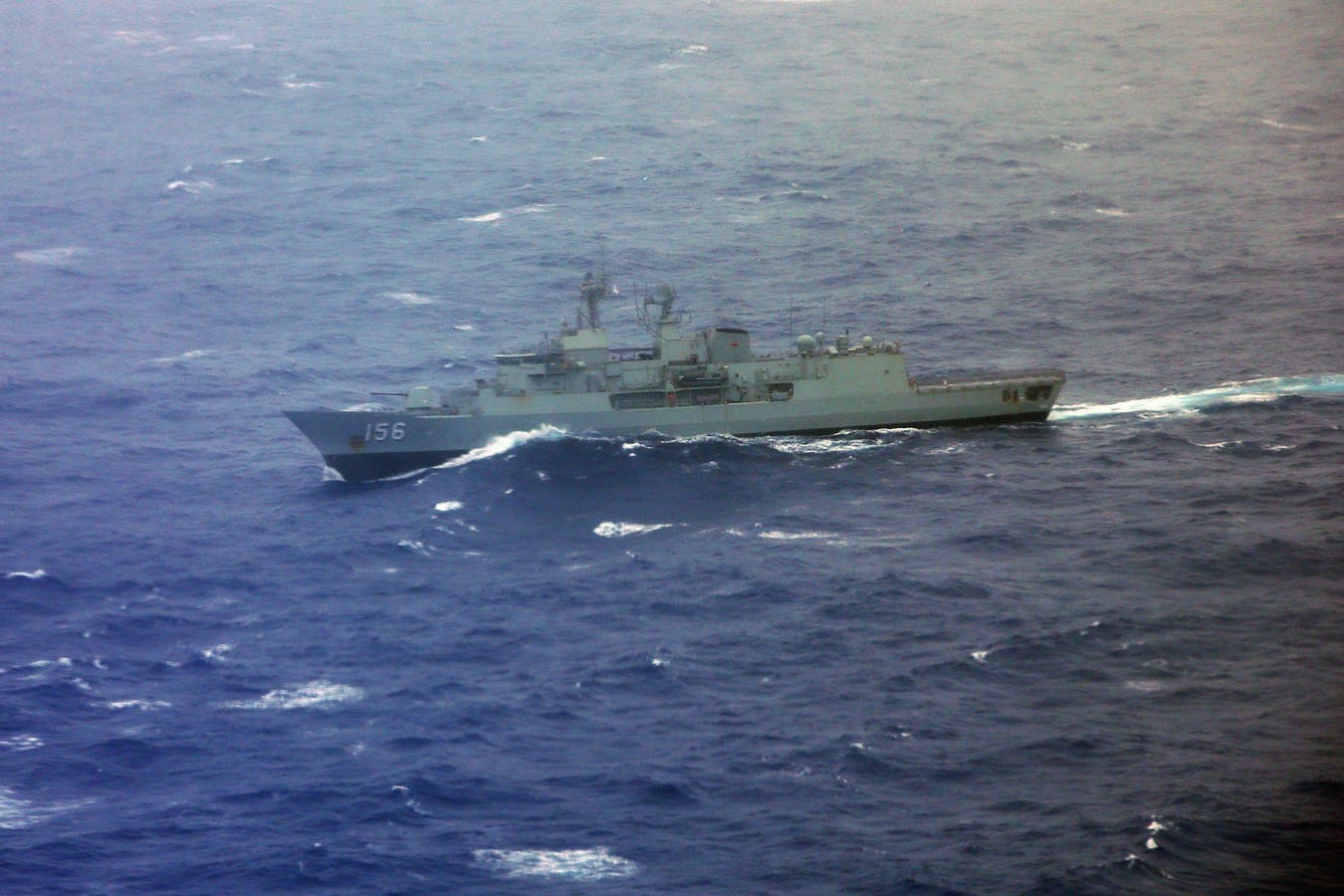In the latest of a string of dangerous, almost warlike provocations, a People’s Liberation Army-Navy (PLA-N) destroyer closed on and used active sonar to harass a disabled Australian frigate conducting underwater repairs in international waters.
Australian sailors were injured in the incident, leaving Anthony Albanese, Australia’s pro-China Prime Minster, looking dangerously weak and out of touch.
An Australian government statement, describing the November 14 attack, strongly suggests the incident was no accident. It is common knowledge that, for divers, active military-grade sonars are extremely dangerous, capable of inducing hearing loss, internal bleeding, and death.
The harassed Australian ship, HMAS Toowoomba (FFH 156), is an Anzac-class frigate. At the time, it was “stopped to conduct diving operations in order to clear fishing nets that had become entangled around its propellers.” The frigate, operating in international waters in the Japanese Exclusive Economic Zone, “communicated its intention to conduct diving operations” via normal maritime channels and employed internationally recognized signals.
A nearby PLA-N Type 956EM destroyer Ningbo (DDG-139) then closed on HMAS Toowoomba. The Chinese vessel acknowledged the frigate’s warnings but continued to approach. According to the Australian government, “Soon after, it was detected operating its hull-mounted sonar in a manner that posed a risk to the safety of the Australian divers.” The Australian divers left the water and were subsequently treated for ear injuries, presumably from the sonar-driven bursts of underwater sound.
HMAS Toowoomba was, at the time, “enroute to commence a scheduled port visit” and had been working to enforce UN sanctions on North Korea. In early November, the frigate had participated in a series of multinational exercises off South Korea’s southeast coast, working to improve cooperative boarding, anti-submarine and anti-air missions.
Chinese Provocation May Threaten Australia/China Détente
This latest incident is serious enough that it may well threaten Australian Prime Minister Anthony Albanese’s China-friendly government, derailing China’s year-long effort to repair stormy relations with Australia.
Australian critics were swift to note the Albanese government failed to promptly respond, suggesting the Labor Government put economic and diplomatic interests over the fate of Australian sailors. The optics aren’t great. Just a day after the incident occurred, Australian officials were telling the press they were confident that a 2020 trade war, sparked after Australia called for an international inquiry into the origins of COVID-19, was winding down, and that China would lift all remaining trade blocks by 2024.
The Australian Prime Minister isn’t letting the incident derail—or even influence—diplomacy. A day before news of China’s maritime provocation broke, the Australian Prime Minister compounded his potential exposure to an enraged Australian public, by hailing improving relations with China, inviting China’s Premier, Li Qiang, to visit.
Australia’s apparent forbearance in the face of such an overt and dangerous provocation is rather stunning. On November 17, the Australian Prime Minister was enjoying an amicable visit with Chinese President Xi Jinping at the Pacific Rim summit in San Francisco, telling the press he had an opportunity to thank President Xi “for the welcome and the discussions that we had in my visit to China recently.” Albanese continued, saying “that the signal that the impediments to trade between our two nations were reducing or being removed, was received positively in Australia.”
In the face of press queries, Australian government officials refuse to say if Albanese even mentioned the provocation during his discussions with the Chinese President.
Gird For Perilous Times In The Pacific:
This incident is the latest in a string of hostile and dangerous Chinese confrontations involving American, Canadian and other forces operating throughout Asia. China is sparking far too many of these near-warlike incidents dismiss the latest confrontations as just a symptom of poor Chinese command-and-control capabilities. These incidents are extremely dangerous, and a failure to respond will only provoke more even more serious attacks.
There are simply too many incidents to dismiss them. In the past month, China has ramped up the pressure, ramming vessels, harassing bombers and helicopters, and, in this latest incident, it has injured Australian sailors. Through it all, China’s forces have acted with relative impunity, and, rather than respond with force, affected countries are taking ever-kinder and ever-more-gentler approaches, meeting with China’s President and angling for better trade terms.
If a shift in Chinese maritime behavior doesn’t happen soon, Australia’s friendly path towards some sort of strange détente with Beijing will unsustainable. Failing to respond in the face of continued Chinese harassment seems only to earn the Pacific’s ever-optimistic democratic stakeholders an endless string of dangerous—and increasingly warlike—provocations.
Read the full article here





